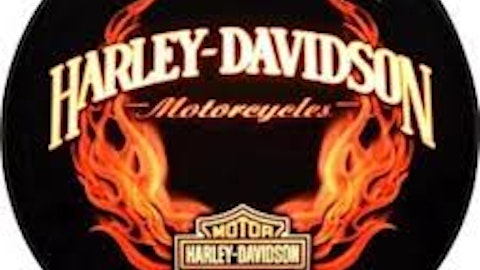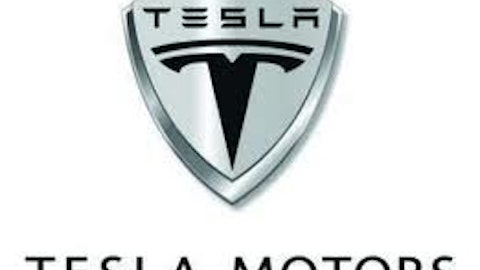Consumers want cars with excellent fuel economy because of the rising cost of gas. This reality dominates strategy in the auto industry, so for manufacturers, better MPG demands serious technology from serious research and development (R&D) efforts. Given this tech-centric competitive environment, a successful R&D program may amount to a real advantage. So, let’s use some leading auto manufacturers as an example, and take this moment to ask the question: how can investors evaluate a particular company’s R&D department?

The return on research capital (RORC) metric is useful to this end because it reveals whether the R&D investment has paid off – or if company engineers and scientists have really just researched and developed for themselves a better “get rich quick” scheme. Specifically, RORC describes how many dollars of gross profit the business earns for every dollar put into R&D. The metric uses gross profit in its formula because operating profit and net profit account for other expenses totally unrelated to the R&D process. For those interested in adding RORC to your stock analysis toolkit, RORC = gross profit divided by last year’s R&D expense.
Analysis methodology
Booz and Company ran a study on the top 1,000 innovative companies and published a great list of the top 20 R&D spenders.
I’ll give you the short of Booz’s study: Toyota Motor Corporation (ADR) (NYSE:TM) invests heavily in R&D, and has been the number one spender for four of the last eight years, and in or near the top five for the other four years. Ford Motor Company (NYSE:F) was a top five spender for many years until it tapered off the investment in 2008, then suddenly dropped out of the top 20 in 2010 – clearly a strategic decision. Honda Motor Co Ltd (ADR) (NYSE:HMC) has maintained a relatively constant R&D investment presence just inside the top 20 for the last eight years.
Toyota Motor Corporation (ADR) (NYSE:TM), Ford Motor Company (NYSE:F), and Honda Motor Co Ltd (ADR) (NYSE:HMC) are definitely committed to the R&D track, but differ significantly in individual strategy: Toyota Motor Corporation (ADR) (NYSE:TM) wants to be the leader, Ford Motor Company (NYSE:F) has cut back recently, and Honda Motor Co Ltd (ADR) (NYSE:HMC) maintains a steady stream of solid investment. In case you were wondering, I left out General Motors Company (NYSE:GM) on purpose – the bankruptcy event a few years ago left lots of holes in the financial statements, and I don’t want to rely on spotty data when trying to explain how to calculate and interpret RORC.
The numbers
The RORC, calculated for each company annually, provides some insight into how the differing R&D policies have performed:
| Ford | Toyota | Honda | |
|---|---|---|---|
| 2005 | 4.34 | 5.37 | 6.07 |
| 2006 | 1.41 | 5.82 | 6.58 |
| 2007 | 4.06 | 6.34 | 7.01 |
| 2008 | 2.31 | 5.78 | 6.92 |
| 2009 | 2.51 | 2.36 | 4.73 |
| 2010 | 5.00 | 2.97 | 4.43 |
| 2011 | 4.58 | 2.86 | 4.38 |
| 2012 | 4.09 | 2.69 | 3.73 |
Higher RORC = better R&D investment payoff. Clearly, Toyota Motor Corporation (ADR) (NYSE:TM) and Honda Motor Co Ltd (ADR) (NYSE:HMC) have suffered huge declines in returns to their R&D efforts – proof that high R&D expenditure does not necessarily mean a high RORC. Before committing to an investment, savvy investors may want to see if management at either company takes any specific measures to counter the diminishing returns to R&D. Whatever the executives decide, investors should know that Toyota Motor Corporation (ADR) (NYSE:TM) and Honda Motor Co Ltd (ADR) (NYSE:HMC)’s shares are currently very near their all-time highs – can the share price be justified despite a declining RORC trend?
Conversely, Ford Motor Company (NYSE:F) looks better than its competitors in terms of RORC trajectory, and has produced strong sales while also maintaining a leaner R&D department. If this article were a research paper, I would try and explain how and why Ford Motor Company (NYSE:F) execs made this improvement – but in brief, just know that the RORC figures suggest that Ford Motor Company (NYSE:F) has benefited from changing its R&D strategy.
In any event, Ford’s vehicle lineup compares surprisingly well to Toyota Motor Corporation (ADR) (NYSE:TM) and Honda Motor Co Ltd (ADR) (NYSE:HMC) in terms of MPG, though it definitely lacks the bleeding-edge green technology like Toyota’s advanced battery patents or Honda’s zero-emission fuel cell vehicles. I’ll go ahead and venture a guess that Ford execs believe that these leading green developments are still a bit too pricey for the mainstream market; for this reason, the company may be wise to forgo similar expensive R&D endeavors.
While it is impossible to say whether Ford, Toyota, or Honda has the better strategy, the point remains that RORC figures in the industry have shifted significantly in recent years. That said, if you own or are considering shares in any of the aforementioned companies, I’d recommend looking into the implications that this shift may have on your portfolio. If you have never used any sort of return on R&D analysis, the RORC metric can give you a great way to evaluate how well (or poorly) design innovations translate into sales. Try it out.
Andrew Gill has no position in any stocks mentioned. The Motley Fool recommends Ford. The Motley Fool owns shares of Ford. Andrew is a member of The Motley Fool Blog Network — entries represent the personal opinion of the blogger and are not formally edited.
The article If You Like Fuel Efficiency, You’ll Love R&D Efficiency originally appeared on Fool.com is written by Andrew Gill.
Copyright © 1995 – 2013 The Motley Fool, LLC. All rights reserved. The Motley Fool has a disclosure policy.




